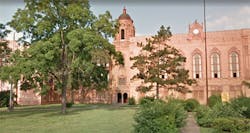Detroit proposal would board up 19 vacant school buildings
The Detroit Public Schools Community District is considering a plan to spend nearly $3 million to board up and secure vacant school buildings.
The Detroit Free Press reports that the school board will decide next month whether to award a $2.87 million contract for the work to a property management company that would board up 19 vacant school properties.
The projects range from $10,850 to board up an annex to the old Northern High School building, to $250,000 to board up the old Cooley High School site.
The work would deal with safety concerns that have been raised for years in the district.
"This creates an unsafe environment not only because of the illegal activities that often occur in these buildings, but also we have had instances where we've had fires in the buildings," Superintendent Nikolai Vitti says.
The goal is to "try to make them safe to the community," and have them not be eyesores. It would also protect the district's investments, Vitti says.
The district has 21 vacant buildings and owns more than 100 buildings, according to information provided to the board. In 2014, as part of an agreement with the city of Detroit, the district agreed to turn over 57 vacant schools and 20 vacant lots to the city in exchange for the city forgiving more than $11.6 million in school debt for electricity.
Board members Angelique Peterson-Mayberry and Sonya Mays say the city also needs to address the school properties it took over from the district. They say it's important for the community to know which vacant buildings are owned by the city and which are owned by the district.
Felicia Venable, senior director of facilities, maintenance and auxiliary services for the district, says the district is trying to ensure that vacant school property is maintained by mowing and plowing them on a regular basis.
Vitti says there are conversations about renovating some of the vacant properties. It is also looking at whether it should move its administration offices, now in the Fisher Building, somewhere else.
About the Author
Mike Kennedy
Senior Editor
Mike Kennedy, senior editor, has written for AS&U on a wide range of educational issues since 1999.
